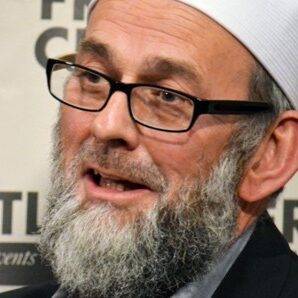It is interesting to note that a recent robust defence of the Simon Wiesenthal Centre’s planned “Museum of Tolerance” in Jerusalem uses an attack on the credibility of Sheikh Raed Salah as part of the argument. Sheikh Raed Salah, wrote the Centre’s Director of Public Relations in a letter to the Daily Beast, is “a declared Muslim extremist, head of the Northern Faction of the Islamic movement and leader of the illegal Al Aksa Association, a body involved in channelling funds into Hamas terror organisations, financing terror in violation of Israeli law and international decisions and norms”. That’s quite a charge list which, if it was at all true, would mean that Sheikh Salah would be in prison in Israel where he lives and is a citizen. The fact that he isn’t behind bars, and has recently won a well-publicised legal challenge to the British government’s attempts to deport him – during which similar libellous accusations were thrown at him and rejected by the British court – suggests that Avra Shapiro is relying on scurrilousness rather than facts to boost the SWC’s case. This has to call into question the other “facts” presented.
That an area of what was once part of the historic cemetery has been used as a “municipal parking lot” for “50 years”, for example, illustrates the fact that Israel has destroyed large parts of Jerusalem’s Arab Christian and Muslim heritage since its illegal annexation of the Eastern side of the city and declaration as Israel’s “eternal and undivided capital”. Shapiro, however, can’t even get this “fact” right. Permission for the parking lot was given in 1985, considerably less than 50 years ago, but its lengthy use for such a purpose is largely irrelevant. Criminal acts don’t become legal just because they go undetected or unremarked.
Moreover, the desecration of the cemetery is but a small, albeit significant, part of Israel’s “Judaisation” policies which include house demolitions and the ethnic cleansing of the indigenous Palestinian population from West Jerusalem as well as East. In 1948, when Israel was created in the wake of the UN partition plan which determined that Jerusalem should be an international city, Palestinian Arabs owned 88.7% of West Jerusalem; 60,000 Arabs were expelled from West to East by the nascent Israeli state. That ethnic cleansing continues to this day, in Israel against non-Jewish citizens, and in occupied East Jerusalem, where illegal Jewish settlers are moved into homes and areas whose Palestinian occupants have had their “right” to live in their own city revoked by an aggressive Israeli colonial power.
The history of a people living under colonial occupation, first by the British and then by Israelis, will no doubt throw up many examples where officialdom produced decisions and documents which can and are produced in later years to “prove” any number of things. The fact remains, however, that the mere notion of building a “Museum of Tolerance” on the site of a historic Islamic endowment (Waqf) property displays an incredible lack of respect for the Muslims buried therein and their descendants. Quite how it fits in with the Simon Wiesenthal Centre’s website claim that the proposed museum will “confront[s] today’s important issues – like global anti-Semitism, extremism, hate, human dignity… and promoting unity and respect among Jews and people of all faiths”, is anyone’s guess.
Indeed, in January 2010, writer Edward Platt recalled that the SWC had itself presided over a long and successful campaign to remove a Catholic convent from Auschwitz on the grounds that there should be no structures on the “single largest unmarked human graveyard in history”. It is shocking that in deciding where to site its Museum of Tolerance the SWC was not prepared to give similar consideration to the graves of Palestinian Arabs, which suggests that the Wiesenthal Centre’s respect for the dead is limited when it comes to Gentiles. “[The museum’s] name seems a mockery of the spirit of religious co-operation that the city of Jerusalem – so central to the adherents of three related faiths – is supposed to represent,” Platt wrote in the New Statesman. He illustrated his point further when he referred to the mass exhumations of graves, which has caused hurt and outrage among Palestinians.
Avra Shapiro says that “Muslim religious law enables relocation of graves and the removal of the sanctity of cemeteries for the purpose of development and for the general good” but doesn’t say whose “general good” may be served by building a centre supposedly devoted to promoting tolerance on a site of particular significance to the local community. Is this a case of a foreign organisation riding roughshod over local sensitivities just because it can? Shapiro argues that in an article for the Daily Beast Rashid I. Khalidi was “incorrect in his assessment of… the intentions of the Wiesenthal Centre in building the Museum of Tolerance”. Whatever the Centre’s intentions are, they surely have little to do with “promoting unity and respect among Jews and people of all faiths”.
To read the original letter/article go to: http://www.thedailybeast.com/articles/2012/04/16/a-letter-from-the-simon-wiesenthal-center.html
The views expressed in this article belong to the author and do not necessarily reflect the editorial policy of Middle East Monitor.








